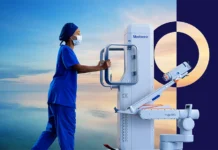Eighty-five percent of children's learning is related to vision. Yet in the U.S., 80 percent of children have never had an eye exam or any vision screening before kindergarten, statistics say. When they do, the vision screenings they typically receive can detect only one or two conditions.
Three researchers at the University of Tennessee Space Institute in Tullahoma are working to change that with an invention that makes children eye exams inexpensive, comprehensive, and simple to administer.
"Eye exams can do so much more than just test vision," said Ying-Ling Ann Chen, device inventor and research assistant professor in physics. "They can detect learning disabilities, such as dyslexia, or neural disorders such as autism. By not testing our youth, we are potentially missing the window for effective treatment for a lot of conditions."
Called the Dynamic Ocular Evaluation System (DOES), the device was developed by Chen; Lei Shi, post-doctoral research associate in laser application; and Jim Lewis, professor emeritus in physics. The researchers hope the device will someday be used in pediatricians' offices across the country, and then expanded to other groups within the population.
DOES is low-cost, high-quality and operator- and child-friendly. It takes about a minute to train someone to use it. The test is done as the child watches a three-minute cartoon or plays a computer game. Infrared light is used to analyze the binocular condition and the assessment is reported on-site within a minute. Neither eye dilation nor verbal response is required.
At the beginning of the cartoon, a three-second comprehensive test screens for binocular refractive risks, high-order aberration, scattering, ocular alignment and significant neural problems. The subsequent dynamic test searches for less significant signs of abnormal ocular alignment, neural responses, amblyopia, and – in the future – mental statuses that include dyslexia, attention deficit hyperactivity disorder, post-traumatic stress disorder and autism. The images and results are digitally recorded and can be electronically transmitted to specialists for referral if necessary.
"Vision screening is important at an early age to detect several different causes of vision disorders," said Chen. "The few children that do get screened today aren't being screened adequately. For instance, many current screening methods do one eye at a time and studies show young eyes will accommodate significantly, and this causes inaccurate results."
According to Chen, children usually do not visit eye doctors unless their eyes hurt. They do not know if their vision is impaired because they do not know what they should be seeing. By having easy-to-administer comprehensive tests as part of the pediatrician's visit, a lot of vision and vision-related diseases could be avoided or treated more effectively – such as lazy eye and cross eyes, which impacts up to 5 percent of the U.S. population.
"During the critical period of childhood up until about age six, if one eye is not as good as the other, the brain will suppress the communication with that eye, and the vision could be lost permanently," said Chen. "This can cause a condition called amblyopia, or lazy eye, which can be prevented through detection."

















